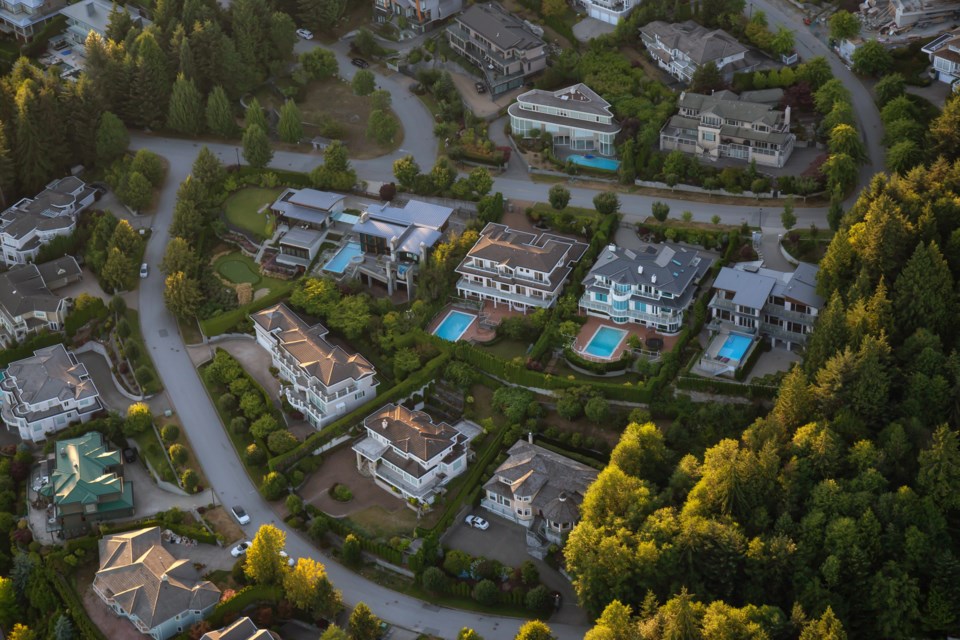The North Shore’s three municipalities are getting some wonky demographics, according to the newest census data, with the District of West Vancouver and District of North Vancouver growing apart from their more urban neighbour, the City of North Vancouver.
“The really big questions are going to be between those two districts in terms of how they see the future, not only for themselves, but also for their children,” said Andy Yan, director of the City Program at Simon Fraser University.
The latest release of data from Statistics Canada show how our populations are aging and how our housing stock is changing. As is often revealed in census data, West Vancouver is an outlier.
Aging population
Those 65 and older in West Vancouver now make up 28.5 per cent of the population, up from 27.8 per cent in 2016. In the Lower Mainland, only White Rock and Belcarra have a larger percentage of seniors. The Metro Vancouver average is now 17 per cent.
The average West Vancouverite is 47.6 years old, and median age for the community is 50.8 – a full 10 years above the median for Metro Vancouver.
Millennials – those aged 25 to 40 – make up just 10.8 per cent of West Van’s population, compared to 25 per cent in the city of North Van, or 23.1 per cent of Metro as a whole. The “avocado toast” generation is also comparatively underrepresented in the district of North Van, where they account for just 15 per cent of the population.
In raw numbers, there are fewer children newborn to age 14 living in West Vancouver today (6,155) than there were in 2001 (6,280), although the number of youngsters did rebound by 285 in the last five years. North Vancouver district has seen an even bigger decline in the population of kiddos, going from 16,065 to 14,565 between 2001 and 2021. The City of North Vancouver, meanwhile, gained 17 per cent more children in that time, while the number of kids in Metro Vancouver went up eight per cent.
Stagnant housing
This batch of census data also offers a window into the “stagnation” of West Van and the DNV’s housing stock, Yan said.
In 2001, West Van’s single-family properties accounted for 62 per cent of the municipality's housing supply, while apartments made up 28 per cent. Twenty years later, those numbers have budged only slightly, with single-family now making up 58 per cent and apartments accounting for 30 per cent (other forms of low-density housing like townhomes make up the remainder).
The district of North Van has done more to diversify its housing in the last two decades, going from 63 per cent single-family in 2001 to 49 per cent today. But both districts are well apart from the Metro average of 28 per cent and miles off from the City of North Van, which is only 11 per cent single-family homes.
Yan said there is almost certainly a relationship between the kinds of homes in a community and the age of its residents.
“That's, of course, greatly shaped by the kind of housing stock that is there, and perhaps is or is not changing,” he said. “You can see that they're three very different municipalities when we talk about the role of housing.”
Because of the cost of housing, particularly with single-family homes, the traditional ability to ascend the property ladder has been severely disrupted, Yan noted.
“Certainly the ladder has been pulled up a bit in terms of cost,” he said. “You also have now some very sizable gaps in terms of the leap from a condominium to a single-detached home almost to the point where it's impossible for a lot of a lot of households without significant help from whatever other source of wealth you have.”
Labour challenges
Some may prefer a hands-off approach to “unstable demographics,” but Yan said there are real and often regrettable impacts for a community as a whole.
“Now you need a workforce that needs to commute into your city, as opposed to living down the block,” he said. “And here's the thing: are they willing to commute to work in the shops in Dundarave?”
Although a lack of affordable housing may first threaten the viability of small retail and service businesses that can’t attract staff, it’s also a threat to larger institutions, like Lions Gate Hospital, first responder agencies and waterfront industrial businesses, Yan added.
“This can also include your doctors, your police officers, your school teachers,” he said. “This is really a deeper set of economic issues for all the municipalities on North Shore to consider.”



